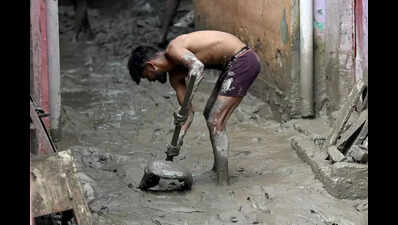New Delhi: Delhi govt is set to launch a drive against illegal encroachments on the Yamuna floodplain following the recent flooding. Officials estimate that nearly 10,000 people live illegally on the riverbed, exacerbating the scale of destruction during heavy rain.Govt sources said that a high-level meeting is planned for the next few weeks, during which a decision could be taken. Representatives of Delhi Development Authority, the landowning agency, will attend it.Officials noted that unchecked settlements not only put lives at risk but also hinder flood management. A recent survey revealed that in northeast Delhi alone, nearly 3,000 people were living on the floodplain, which is double the number recorded a year ago.While the action will be carried out by DDA, the govt will oversee the operations, aiming to remove all the encroachments by Nov as part of a 45-point action plan for cleaning and rejuvenating the river. Yamuna clean-up is a flagship commitment of this BJP govt.DDA has been removing encroachments from the floodplain and reclaimed a significant area of land through various demolition drives. It has reported reclaiming 1,459 acres in 2024. Some of the encroached areas are near Wazirabad, Madanpur Khadar, slum clusters around Shastri Park and Okhla and slums near Kashmere Gate, officials said.The Yamuna breached the 206-metre mark in Delhi for the first time this monsoon on Tuesday evening, forcing authorities to evacuate families.Officials explained that encroachments reduce the river’s natural flow by narrowing channels, thereby raising the risk of flooding. “Encroachments are blocking natural drains, contributing to waterlogging and urban flooding,” one official said.The ecological fallout is severe. Untreated sewage and solid waste from these habitations flow directly into the river, polluting the water and threatening biodiversity. Habitats for fish, birds, and aquatic plants are shrinking rapidly.Yet, for thousands living on the riverbed, survival outweighs environmental concerns. Most are migrants or members of the urban poor, priced out of formal housing. Proximity to markets, industries, or construction hubs provide livelihood opportunities, but life here is marked by hardship, with little access to sanitation, drinking water, healthcare or electricity.These families are also the first victims of disasters. Seasonal floods wash away homes and belongings, while eviction drives keep them in constant insecurity. Children often miss out on education due to repeated displacement, trapping families in a cycle of poverty.










